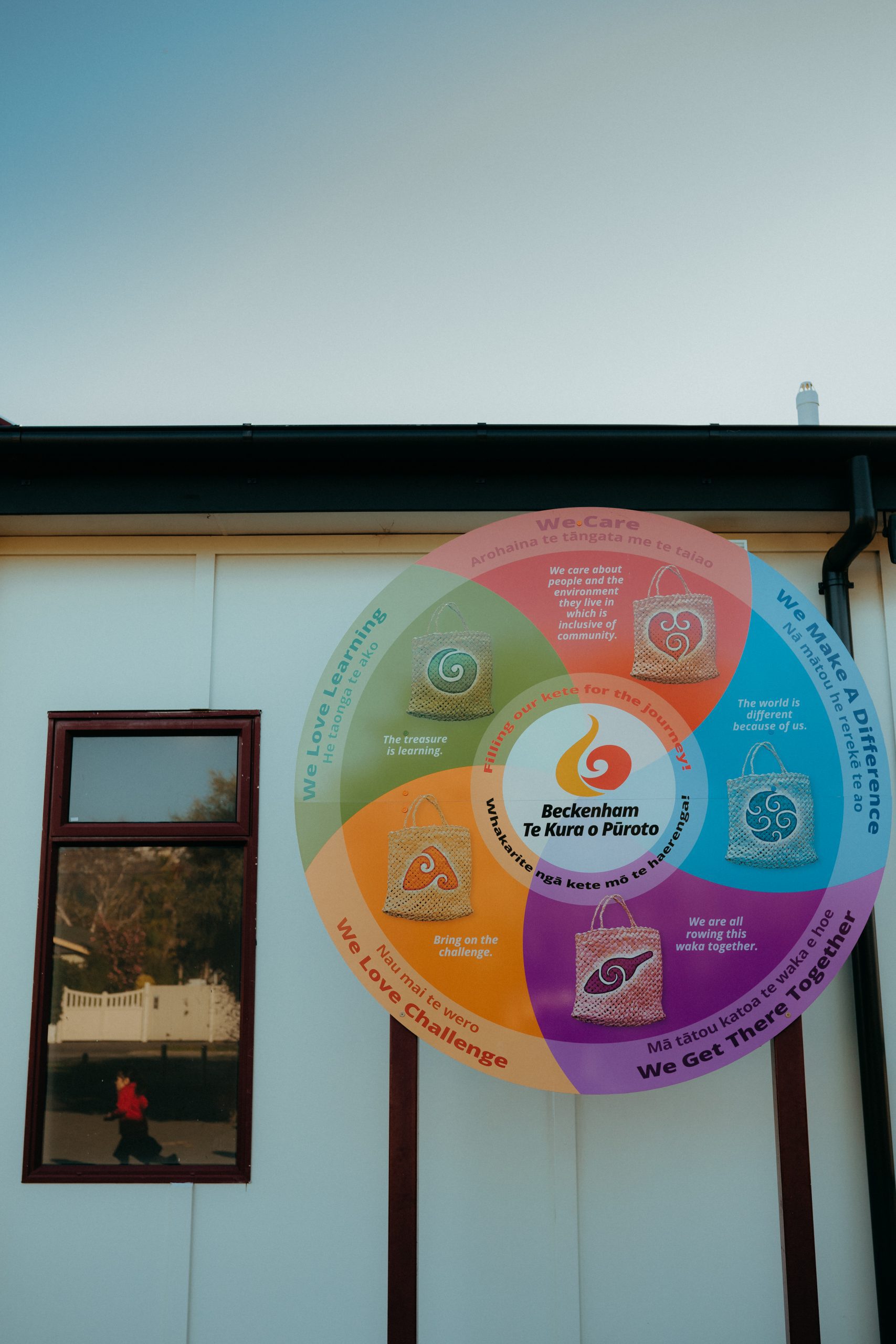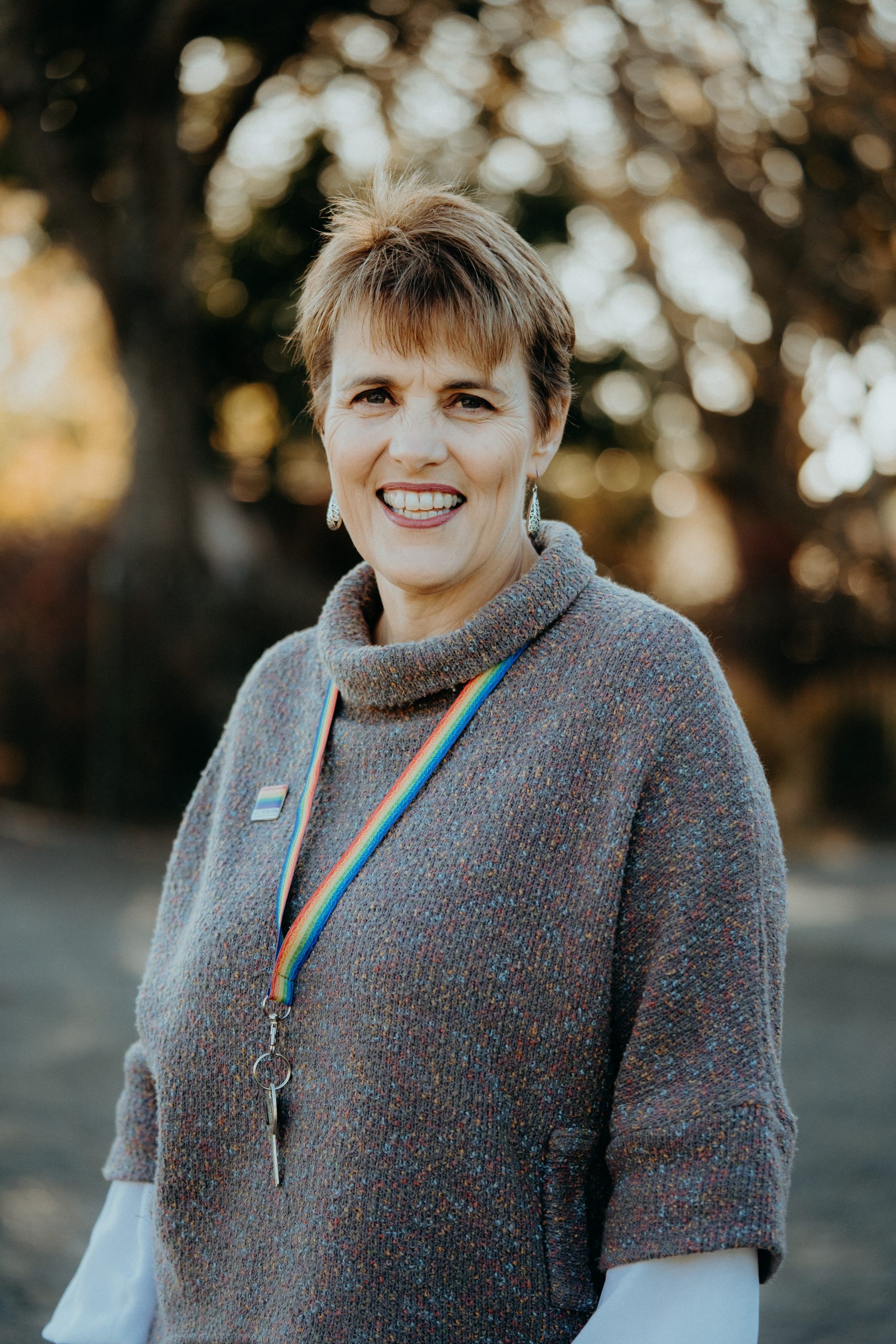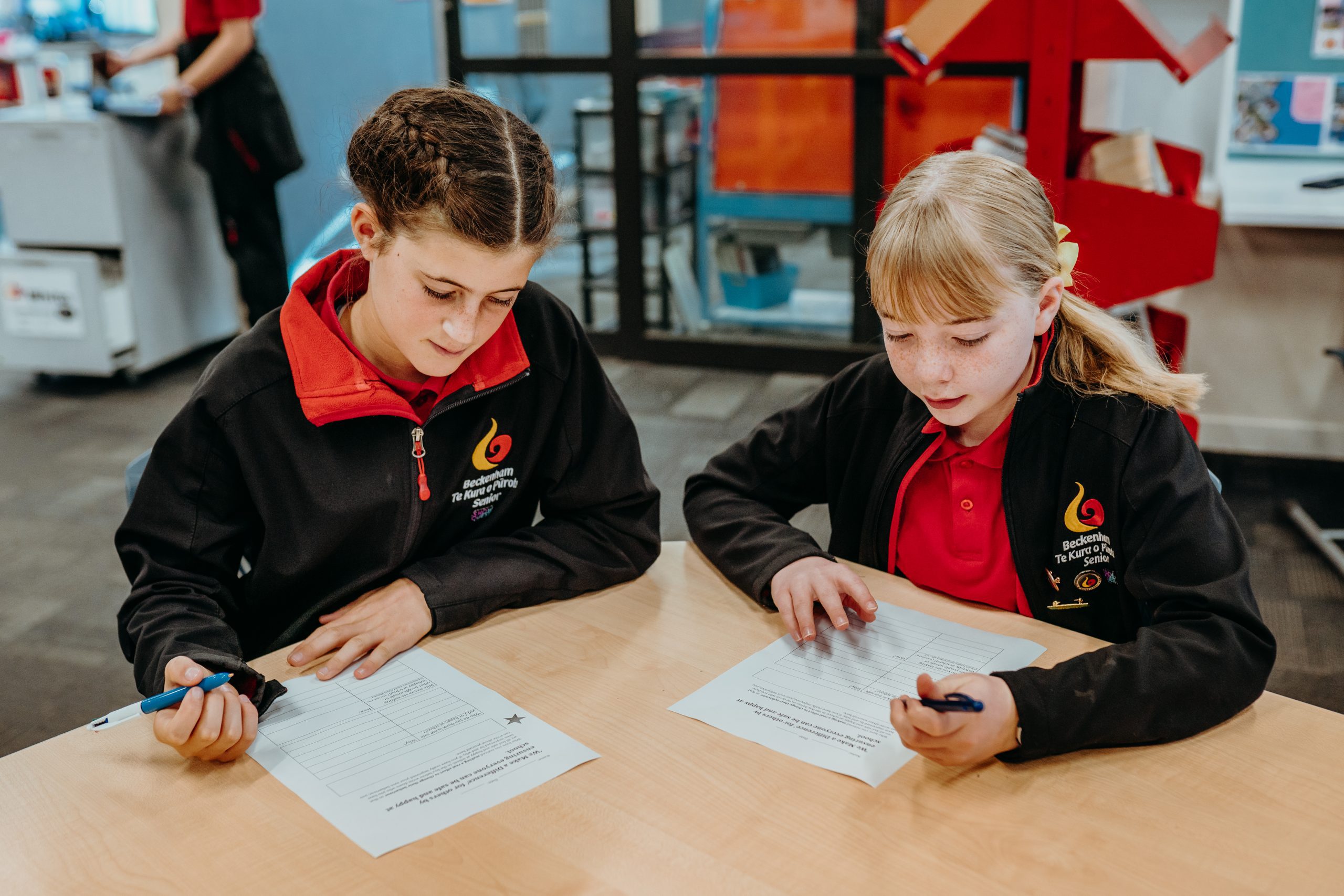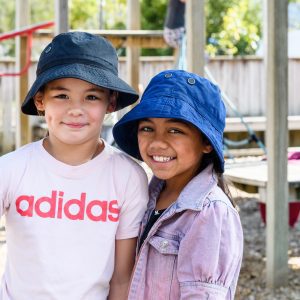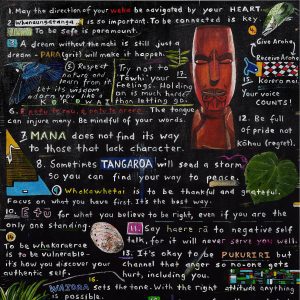Two years ago students at Beckenham Te Kura o Pūroto in Ōtautahi Christchurch asked the school for a diversity group. They were a cohort who’d gone through with a child who had come out as a different gender than assigned at birth, and they wanted to talk about equity issues.
For a school with a wellbeing team, and many initiatives to support tamariki-led wellbeing, it wasn’t a big ask.
“They were a group of really strong Year 8s wanting to meet fortnightly and talk about how to promote diversity in the school with a teacher who was empathetic,” says principal Sandy Hastings. “Not that all of the teachers wouldn’t have been supportive – but one straightaway said, ‘Yes, I’ll come and be there, and sit in with the group.’”
Gender diversity has been a quintessential ako experience for Beckenham staff – teachers learn as much with the learners as the learners do from them. “The work we had to do to get ourselves to a much more professional space around supporting diversity really made us deepen and broaden our practice around what diversity looks like,” says Hastings.
“New Zealand is doing some good work at considering cultural diversity and disability and increasingly around neurodiversity, and yet I was embarrassed to have to say when the parent and child first came to talk to me that I had never really thought about gender diversity.
“I realised very quickly I had a big gap in my professional knowledge and understanding, and it wasn’t the parent’s job to educate me. It was my job to make sure our staff upskilled and learnt so that we could do what we needed to, to support not just that child, but every child who might at some point question their gender.”
Aotearoa New Zealand research indicates that by the time they are 20, about five percent of young people will have questioned their gender identity at some stage, and some will have acted to change their assigned gender. “So as a principal of this school of 500 children I have to assume that 25 children are going to at some time in the next five to ten years question their gender identity. Having a child in our school transition was the most amazing experience to have the honour to be a part of. We learnt so much from being part of that journey,” says Hastings.
Like many schools in Ōtautahi, Beckenham has a strong emphasis on tamariki wellbeing, a legacy of the earthquakes. But a quick look at the school’s website shows a key difference: Beckenham focuses on tamariki-led wellbeing. Under one of many website headings on wellbeing is “Student Involvement”, and the list includes playground mediators, a student council, wellbeing team student leaders, celebration assemblies, cultural presentations, waiata and whare time, and theme days and weeks such as, “We care”, “We make a difference”, and “Keep New Zealand beautiful”. It’s an approach recommended by the Education Review Office in their report Wellbeing for Success: Resource for Schools, which found five aspects are vital to successfully promoting and responding to student wellbeing, one being “students are a powerful force in wellbeing and other decisions”.
“The more we do in this space, the more they want. There’s an unmet need”
The initiatives that Hastings is most keen to talk to about are those that bring students and teachers into rich conversations. They acknowledge who the child is, are a way to listen to student voice, and enable students to be active participants in their own learning and wellbeing.
At the start of each school year, students and whānau meet with the child’s home group teacher for a half-hour one-on-one conference. Teachers have a script of questions to ask, so there’s consistency across the school. These concern the child’s strengths and passions and what is likely to engage them; what they find challenging or tricky or might keep them awake at night; and how they best learn – sitting at a desk, sitting with a buddy, with technology, in a quiet space and when do they need breaks?
As tamariki grow, they are able to contribute more but, says Hastings, “It’s surprising if you ask a five-year-old, ‘What do you like about school, what do you like doing, and what supports you in your learning?’ – it’s quite amazing what they can articulate.
“Kids know that they’re good at being kind or maths or making friends, and that other kids are better than them at certain things. But the more they know that some things are harder, with growing awareness, then there can be growing self-doubt. If a child doesn’t have the right support around them then there can be disengagement with that particular thing – ‘I’ll never be as good as other kids’, ‘I can’t learn as fast as other people, so I’ll never be able to learn’ – all these negative voices.”
A lot of the information gathered by teachers feeds into regular Quality Circle Time activities, and related social and emotional coaching.
For the “high-flyers”, as Hastings describes them, the children with differences related to neurodiversity, health and so on, this information is fed into an online form that includes their photo and becomes available to teachers who need it. Relievers receive a clear file with a full page on each child who might be in a class they’re taking. “They can recognise the child so if something happens, they can go, ‘Okay, that’s why they’re doing that and these are the strategies I should use to support them’. It really helps our relievers to better meet the diverse needs of our kids, which might otherwise be invisible.” It’s been a lifeline for children who desperately don’t want to stand out or to be seen as different. The information then goes on the portal to all staff, with the profiles updated, signed and passed on each year to new teachers. “It becomes a really rich document, a record of rich conversations,” says Hastings.
Another tamariki-driven initiative that addresses behaviour involves students in Years 5–8 completing a confidential behaviour survey each term. The survey looks at positives. “A child might say, ‘I’ve been impressed by my friend, he’s started being nice to everyone and he’s kind to me’. Or, ‘She includes everyone now’ – and this is fed back confidentially to the child so that they know that if they try harder their peers notice,” says Hastings.
Concerns are also sought with questions such as, “Is there anyone you see being affected by someone’s behaviour?” Hastings says, “This is where we find out the stuff that teachers often don’t hear about because it’s happening under the radar – ‘I’m worried about someone because his friends are now playing with other people’, or ‘I’m worried about this person because they’re always sitting by themselves at morning tea, and I ask her if she wants to play and she always says no thanks’.”
“Kids worry but they don’t always know what to do about it. We ask too if there’s anyone you’ve noticed who’s making other people unhappy. Every school has bullying, and this is one of the ways, one of the strategies, we have to deal with it.
“If students have a voice, then they feel heard, and if they’re heard then they are more likely to engage, and if they engage they’re more likely to learn.”
“For example, if 15 children comment in the survey that they find a particular child’s behaviour challenging, including using homophobic language, bullying people for being LGBTQ+, and using put-downs, then we can do something about that. We are probably aware that their behaviour is tricky, but what we really find out is that the emotional impact they’re having on the kids is real.
“This helps the teachers to feed back to students what we think might be the best strategies for supporting them. We don’t say to the child, ‘You need to change’. We can say 15 children have pointed out that your behaviour is hurting others, and we need to help you to find some other ways of relating to people because what you’re doing at the moment isn’t serving you very well, and it’s impacting on your ability to form positive relationships.”
Hastings says the work of tamariki-led wellbeing is constant and ongoing. “Children are products of a complex environment, not just a school environment. They might come from homes that have different opinions and values than the ones we promote at school. Student voice is diverse.” And the work is resource intensive – a teacher is released one day a term to feed back to students on the survey, but it “pays dividends”, says Hastings. “If students have a voice, then they feel heard, and if they’re heard then they are more likely to engage, and if they engage they’re more likely to learn.
“If they don’t have a voice and they come to school every day thinking that it doesn’t matter what I think, no one’s going to listen, and so why bother – then that becomes pervasive.” “Parents like it too,” says Hastings. “The more we do in this space, the more they want. There’s an unmet need.”
***
In Porirua, tamariki-led wellbeing initiatives are also deeply embedded in school practices, with the Porirua East Kāhui Ako putting student voice at the top of its aspirational Graduate Student Profile: “Everyone has a voice that can change the way things are.”
At Porirua College, where support staff play a key role with a cohort of mainly Māori and Pasifika students, principal Ragne Maxwell is enthusiastic about an intensive whānau approach that sees student leaders at the forefront of initiatives that ensure student voice is heard.
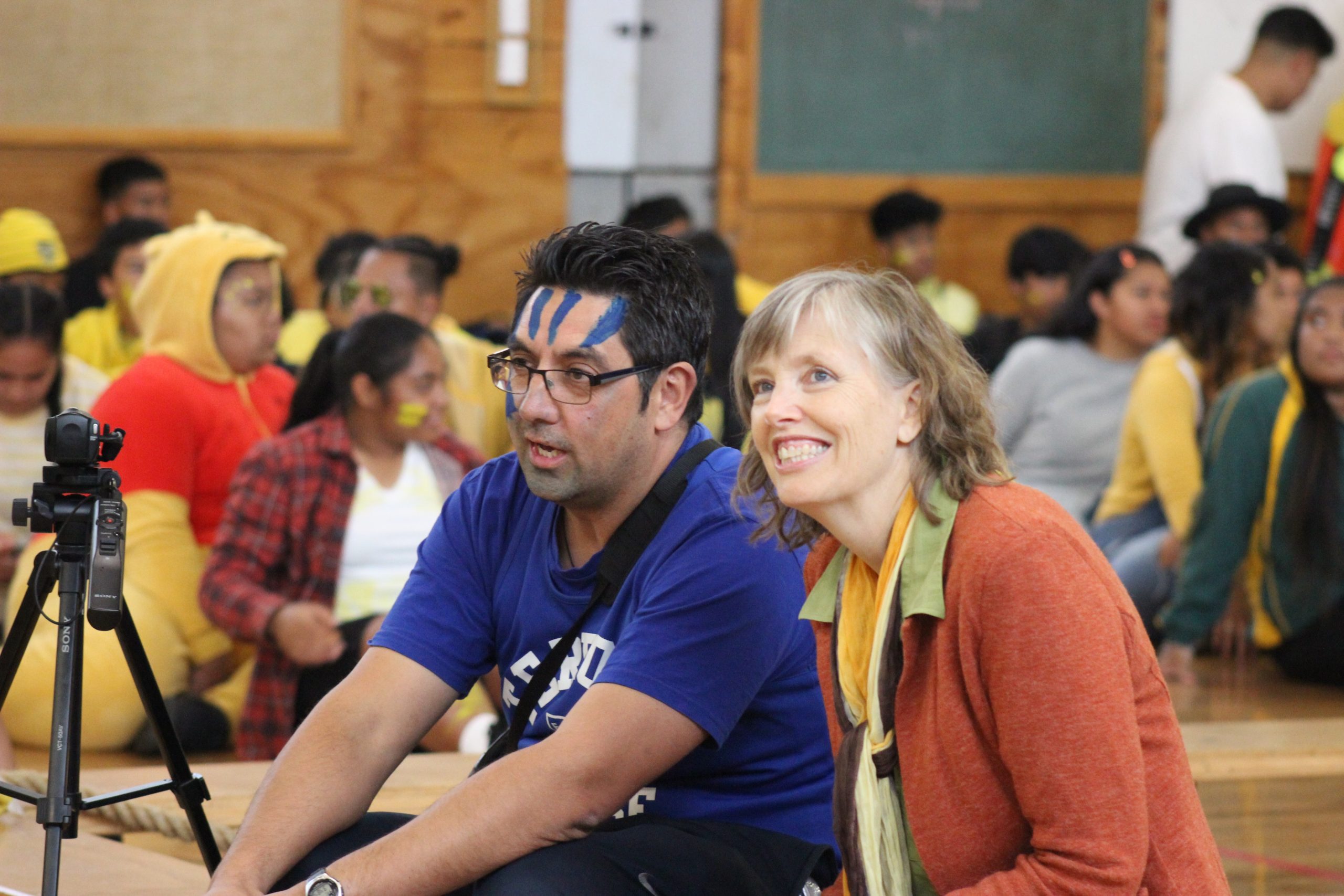
All students are in houses that centre on a physical hub. Year 9 and 10 students have their core classes in rooms off their hub, at which they also have access to food and support from house leaders. The whole school now eats lunch together as part of a pilot of free school lunches. “It’s making a massive difference and we hope it continues,” says Maxwell. “We’re offering good quality meals that we make ourselves, so no one’s getting a cut. There’s been a massive decrease in incidents at lunchtime because we sit down together, students and teachers, we karakia together – and when whānau are together and you’re not hungry, then you don’t go out and hit someone.”
There are multiple student councils (including sports, arts, cultural, service), student mentors in junior classrooms, and opportunities for students to undertake leadership training, which together with the involvement of support staff, make the school a recognised leader in restorative behaviour practices. “A group of students with an issue to sort out are as likely to rock up to the support staff corridor as they are to the Senior Leadership Team,” says Maxwell.
The close relationships also dispel any stigma that might attach to students experiencing resource inequity. Other students or school staff will notice when a student needs extra support with, say, food or uniform items or period products. “They’ll just quietly offer them what they need,” says Maxwell. “The mentoring has really big student buy in.”
But Maxwell has sympathy for primary schools in the area. She says the college is getting good support now for wellbeing, with students having access to a counsellor, social worker, youth worker, nurses, a doctor, and the community liaison support worker, Phil Skipworth, who has been recognised as a Wellingtonian of the Year. (As Ako went to press, the school reported with much sadness that Phil Skipworth had passed away.)
“It’s about moving from the narrow deficit view of students to a more broader, strengths-based understanding”
“Primary schools need that support too, the guidance staff – it’s essential for primary schools. Students are experiencing trauma at younger and younger ages, and this plays out with increasing levels of violent behaviour. Those children have a need that doesn’t go away just because they’re in primary school. By the time they hit high school, with hormones and so on, and if it hasn’t been addressed at the primary age, then it’s worse. Teachers in the Kāhui Ako are absolutely committed to growing the student voice, but they need the support.”
It’s a sentiment that Dr Lucy Hone from the New Zealand Institute of Wellbeing and Resilience and adjunct senior fellow at the University of Canterbury agrees with. She’s an expert on wellbeing, and tamariki-led wellbeing, and has worked with schools in communities of practice across the region as part of Grow Waitaha, the government initiative that aimed to strengthen schools and their rebuild following the earthquakes. She emphasises that, “if you want to improve wellbeing in a systemic way then you have to absolutely work in partnership with tamariki and whānau. I think the importance of universal, upstream wellbeing initiatives [in early childhood and primary learning centres] is often overlooked.”
“It’s about being child-centred”, she says, and there are a myriad of ways to do tamariki-led wellbeing – buddy coaching, storytelling through specific texts where children then tell their own stories about their strengths, student wellbeing councils, playground design initiatives and so on. She’s a big fan of TKI’s Inclusive Education website and student learner profiles. “They’re a great way to engage students in learning that matters for them, and to identify the ways they learn best, plus they enable educators to grow a more holistic understanding of that student and what defines success for them. They can show what students value and what connections are important to them. It’s about moving from the narrow deficit view of students to a more broader, strengths-based understanding of what’s important to them.” Hone notes that some schools are changing the types of things they are presenting awards for in a bid to promote curiosity, bravery and perseverance.

The Ministry of Education’s Garry Williams, who led the Grow Waitaha project, says the work has been successful in supporting schools to deliver education in new ways. “Grow Waitaha has been about bringing student voice into the conversation, and how to do that – because it works,” he says. Funding for the programme has been extended until 2025.
Teacher Louise Wilson at Mt Pleasant School in Ōtautahi accessed wellbeing PLD from Dr Hone through Grow Waitaha last year. It was a fantastic opportunity, she says, for the teachers who are passionate about wellbeing and student-led wellbeing, but the question is sustainability.
Wilson is a full-time teacher, plus a team leader for Years 7 and 8. “Student-led wellbeing is a passion of mine and lots of colleagues but to find time in a crowded curriculum on a regular basis – it can be a little bit disheartening. We are really exhausted; it’s hard work, to work on child wellbeing, and then our own wellbeing isn’t so good. Burnout is really common.”
Even so, like her colleagues, she loves the work. She’s working with the student council on ways to improve tamariki wellbeing using the Sparklers website, but adapting the activities for the school. A group of Year 8 students will later in the year survey their peers to pick up ideas, and run things like house days for the whole school that are about collegiality and team building. There’s an emphasis on the tuakana/teina concept and the Te Whare Tapa Whā building blocks.
“Student-led wellbeing is a passion of mine … but to find time in a crowded curriculum on a regular basis – it can be a little bit disheartening”
“But it breaks my heart a little that we can’t do more. We see more and more kids with the likes of anxiety disorders coming through,” says Wilson. The phenomenon is a worldwide thing, she says, not unique to Ōtautahi – the pressures on kids are different and changing. “What they’re exposed to, what they see and hear now, it’s different.”
In an ideal world, Wilson says, there would be more time out for teachers from classroom programmes to progress what was learnt with Hone across the whole school, to support teachers to implement the programmes in their classrooms, and to grow the older students who could work with the teachers. “It’s much more helpful if kids have buy-in, and less demanding on teachers. We would let students get their teeth stuck in – so they have a better understanding of themselves and their pressure points, their triggers. The Ministry needs to give us more time.”
RESOURCES
TKI Inclusive Education website
www.inclusive.tki.org.nz
ERO report Wellbeing for Success: Resource for Schools
www.ero.govt.nz/publications/wellbeing-for-success-a-resource-for-schools



